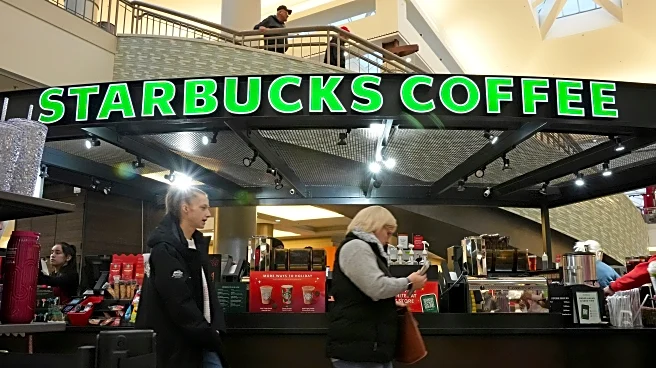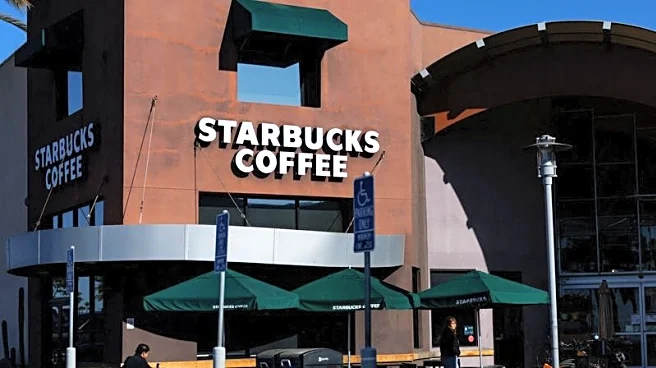What's Happening?
Starbucks is closing several locations in Massachusetts, including the iconic steaming kettle location in Boston's Government Center. This move is part of a broader strategy to address declining sales, with the company planning to shut down hundreds of stores across the U.S. and Canada. The closures will affect both retail and non-retail employees, with 900 non-retail positions being eliminated. Starbucks aims to focus its resources on a business turnaround, spending $1 billion on restructuring efforts, including $150 million on employee separation benefits. The closures are set to begin immediately, with the Boston location closing by the end of the weekend.
Why It's Important?
The closure of Starbucks locations, particularly in iconic areas, signals significant shifts in the company's strategy to combat declining sales. This decision impacts local communities, where these stores have served as social hubs. The restructuring plan, which includes substantial financial investment, highlights Starbucks' commitment to revamping its business model. The layoffs and store closures could affect employee morale and community relations, especially in areas where Starbucks has been a longstanding presence. The move also raises questions about the future of unionized stores, as many have yet to reach contract agreements.
What's Next?
Starbucks plans to notify non-retail employees affected by the layoffs early Friday. The company will offer transfers and severance packages to retail employees where possible. As Starbucks proceeds with its restructuring, it will focus on optimizing its store locations and resources. The company expects to have 18,300 North American locations by the end of its fiscal year. Stakeholders, including employees and local communities, will be closely monitoring the impact of these closures and the effectiveness of Starbucks' turnaround strategy.
Beyond the Headlines
The closures reflect broader challenges in the retail and food service industries, where companies are increasingly reevaluating their physical presence in response to changing consumer behaviors. Starbucks' decision to invest heavily in restructuring may set a precedent for other companies facing similar issues. The cultural significance of Starbucks locations, particularly in iconic areas, underscores the potential loss of community spaces and the need for businesses to balance economic strategies with social responsibilities.












